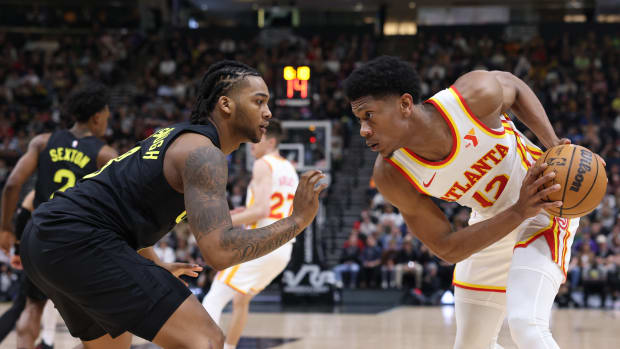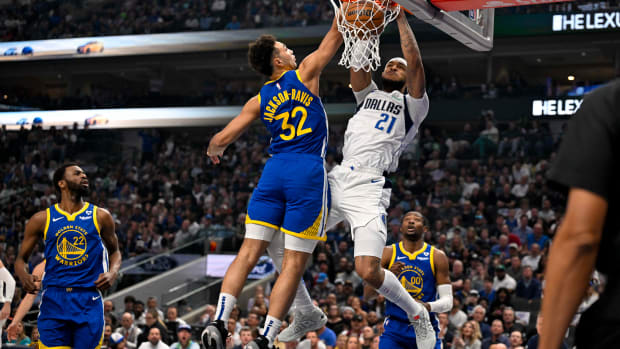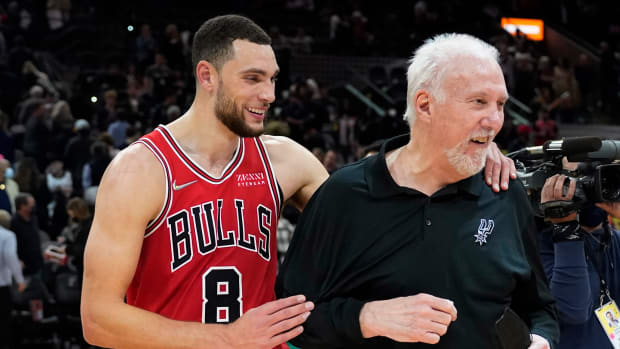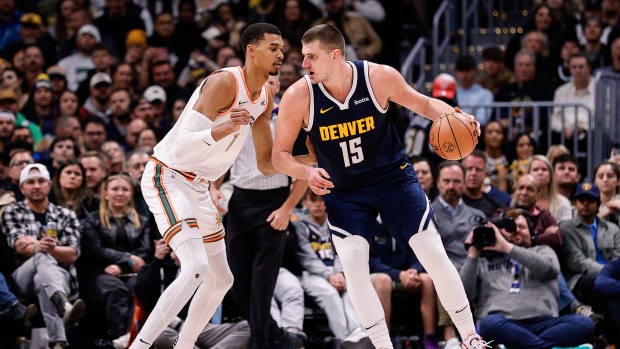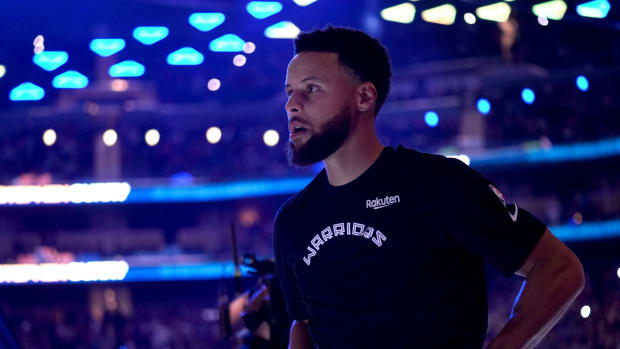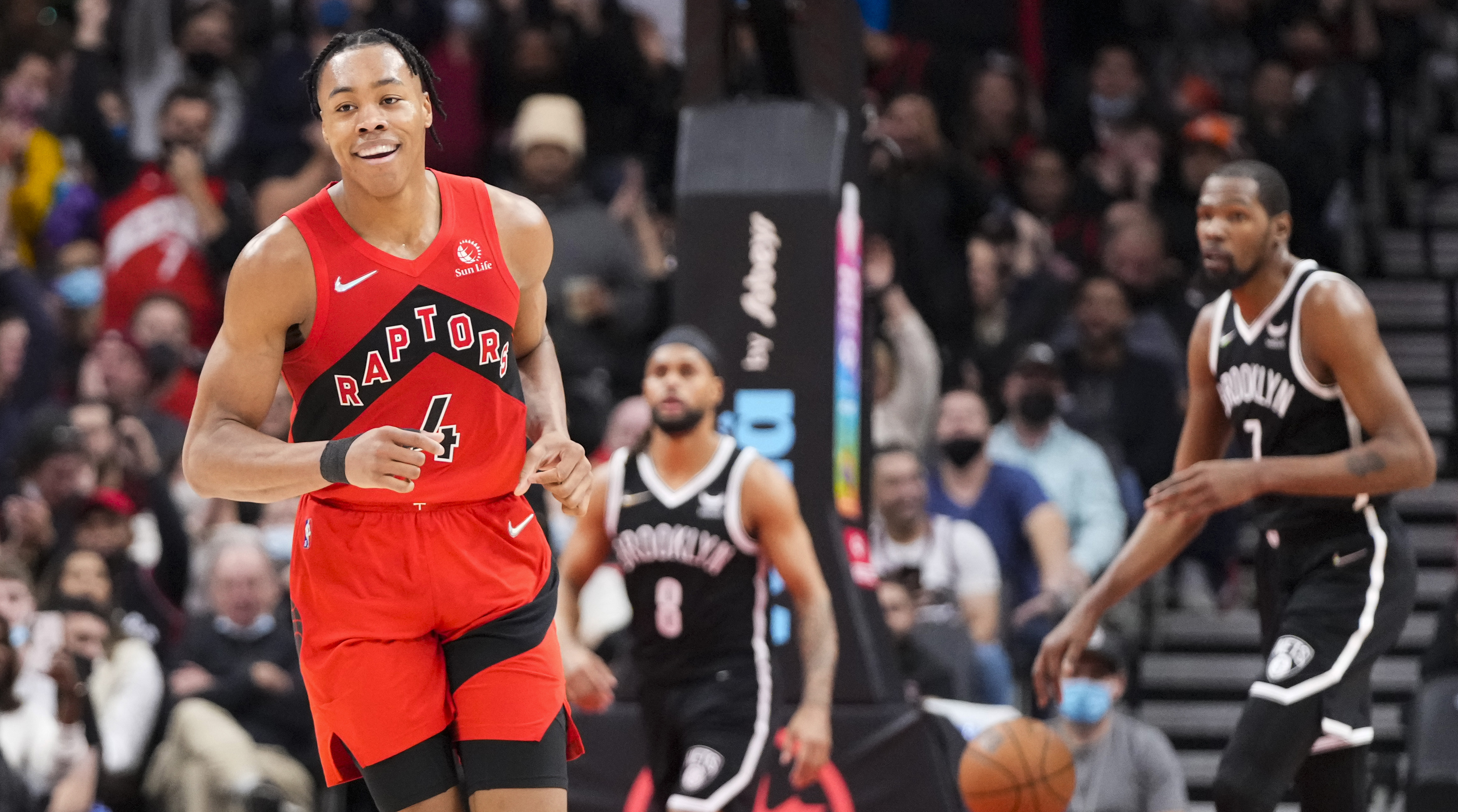
The Raptors Are Doing Something Rarely Seen in the NBA
Coming off a disastrous 2020–21 when everything that could’ve possibly gone wrong seemingly did, the Raptors were overlooked by pretty much everyone in any discussion about competitive teams in the Eastern Conference.
You have reached your limit of 4 premium articles
Register your email to get 1 more
After a couple of weeks, the jury is still out on this team—the Raptors are 6–6—but there’s more reason for optimism in the short and long term than was initially forecast. Much of that has to do with Scottie Barnes’s global takeover, OG Anunoby’s All-Staresque leap, long/rangy/interchangeable lineups that overwhelm and the fact that Pascal Siakam (still perhaps Toronto’s best player) missed the first 10 games.
Dig a bit deeper and there’s also something peculiar here that’s made Toronto one of this season’s more disorienting opponents. The Raptors are currently tied with the Jazz for first in offensive rebound rate, grabbing 32.6% of their own missed shots. They rank third in second-chance points per 100 possessions, too. It’s been a stark departure from how they’ve operated under Nick Nurse, where they’ve never finished outside the bottom third in offensive rebound rate. (When they won the title in 2019, the Raptors grabbed 22.9% of their own missed shots, which ranked 14th out of 16 playoff teams.)
Leaguewide, second-chance opportunities have been on a steady decline over the past 20 years, in large part thanks to the split-second tradeoff that occurs when a shot goes up: Crashing the glass can be fortuitous, but risk rises against teams that are increasingly looking to push the ball and attack in the open floor. (The NBA’s average offensive rebound rate isn’t exactly in a free-for-all but was 30% in 2011–12 and currently sits at 25.9%.)
Here’s where Toronto’s start becomes kinda incredible: In addition to gobbling up so many offensive boards, they also have done a better job than any other team limiting transition opportunities—aka they’re having their cake and eating it, too.
The Raptors rank first in defensive transition frequency (meaning they force opponents to execute in the half court more often than any other team) and rank second in fast-break points allowed per 100 possessions (a mere 9.1). The Raptors are the only team that ranks in the top three in offensive rebound rate and fast-break points allowed per 100 possessions, a combination that practically never happens for obvious reasons. (Andre Drummond and Stan Van Gundy’s Pistons were the last team to accomplish that, back in 2016, and since 1997, only four others have qualified: the '13 Nuggets, the '09 Blazers, the '08 Sixers and the '02 Clippers.)
Things are a little different when Khem Birch—a glutton on the offensive glass—isn’t healthy, as has been the case over Toronto’s last couple of games. But this roster can still throw large, adaptable lineups together: Anunoby, Barnes, Siakam, Chris Boucher, Precious Achiuwa, Svi Mykhailiuk and Dalano Banton (a 6' 7" backup point guard who’s taken Goran Dragić’s presumed spot in Nurse’s rotation) are all typically as long and/or strong as whoever needs to box them out. Gary Trent Jr. is 6' 5" and leads the NBA in steals, while Fred VanVleet maximizes his slight physical measurements as well as anyone in the sport.
When shots go up, the Raptors find a decent equilibrium between bombarding the boards and creeping a step or two in just to sniff out the scene and maybe get their hand on a ball should it bounce their way.
Someone like Boucher will fling his body in from the corner, while Barnes (a basketball prodigy in myriad ways) is a tad more vigilant, giving himself the chance to sprint back without surrendering Toronto’s chance to score. (He unsurprisingly leads all rookies in offensive rebounds.)
The Raptors’ versatility helps them limit transition chances for the other team. They almost always have several players on the floor who can cover multiple positions, reducing any strain normally caused by mismatches off a hard push.
They’re also disciplined, with pretty good floor balance. Sometimes a player will dive in from behind the arc as a teammate who was just in the paint backpedals toward the other end. Both elements can be seen in this play below, where Mykhailiuk makes a move from the weakside as Boucher’s three goes up. Meanwhile, Barnes is back to pick up Darius Garland, and from there Toronto switches just about every screen, as they stunt, run shooters off the line, scramble and contest until the play is won.
The Raptors may dial back their aggression if Siakam can be the same All-Star force last seen two years ago. Without him at that level, they don’t have proven shot creators, limiting an attack that currently ranks 25th in half-court offense (via Cleaning the Glass) and is hampered by an overall inability to generate quality shots at the rim or behind the three-point line. Toronto doesn’t really draw fouls, either.
But their work on the glass has so far yielded enough bites at the apple for them to stay at least around league average in offensive rating. Pay close attention and what’s most notable is how many possessions end with two or three Raptors refusing to retreat back on defense. Sometimes it’s subtle, but carried from play to play throughout 48 minutes the constant need to really prioritize every box-out and secure every defensive rebound must be exhausting for the other team.
Watch NBA games online all season long with fuboTV: Start with a 7-day free trial!
The Raptors also are not old. And even though their game plan essentially requires them to be in two places at once, with constant communication, hustle and focus, there’s enough talent, athleticism and length to believe they can mostly sustain what they’ve done. Maybe not as well as they have—especially if Siakam continues to log major minutes at the five while Birch’s knee keeps him on the sideline—but enough to stay in the hunt for a top-six seed all year long.
More NBA Coverage:
• NBA Power Rankings: Are the Warriors the Best Team in the NBA?
• Kevin Durant Is Doing It All for the Nets
• Evan Mobley Is Doing Impossible Things for the Cavs
• NBA Draft Notebook: Banchero Strengthens Case for No. 1 Pick
Sports Illustrated may receive compensation for some links to products and services on this website.






























